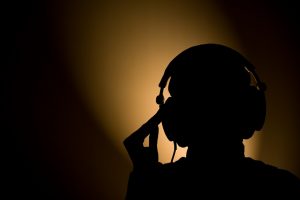
After happiness, sadness is the most common emotion expressed in music.
But what is it that attracts us to listen to sad music and what role does that play in the rising prevalence of clinical depression and suicide in Australia and around the world?
Dr Sandra Garrido, a researcher of the MARCS Institute at the University of Western Sydney who has spent several years investigating the link, said it was common for people to want to listen to sad music when they felt down.
She said most people could use sad music to make themselves feel better, but normal mood regulation strategies like this often backfired in people with clinical depression.
“Our studies reveal that people with clinical depression believe they are benefiting from ruminative behavior – a method by which they immerse themselves in an environment where they are deliberately dwelling on a negative emotional experience, (such as listening to sad music when they feel depressed), but we have strong evidence to prove that this type of behaviour exacerbates depressive symptoms,” she said.
[social_quote duplicate=”no” align=”default”]“Generally for most people, listening to music – even music that expresses negative emotions like sadness or anger – can be an effective way to deal with certain emotions.[/social_quote]
“But research suggests that for those who experience depression, the effect is different. Rather than making them think more clearly, people with depression begin to show diminished cognitive functioning.”
Depression now affects one in every 20 Australians and each day eight Australians lose their lives to suicide.
According to a report released by the Australian Bureau of Statistics, suicide accounted for more than one third (33.9 per cent) of deaths in 2015.
It was the leading cause of death among all people aged between 15 and 44 and claimed the lives of 87 children under the age of 17.
Dr Garrido said research identified that most adolescents listened to around three hours of music each day, especially when feeling distressed or down.
She said this link between music and depression in young people has led to music being blamed for a number of youth suicide cases.
“It all comes down to a lack of understanding about how behaviour affects the mood of people with depression,” she said.
“Evidence suggests that people with tendencies to clinical depression respond to music differently at a cognitive level.
“Our study showed that this is because sad music seems to trigger sad memories and negative thoughts, thus perpetuating cycles of negative thinking.
“We found that rather than feeling better after listening to sad music, people with high scores in rumination reported feeling more depressed.
“This means it could be quite dangerous for a person who is already severely, possibly clinically depressed to listen to sad music when feeling down.”
Dr Garrido is currently working with MARCS Institute researchers to develop a web-based tool to help young people use music as a pathway to understand maladaptive behaviours.
Dr Garrido also recently published a book titled Why Are We Attracted to Sad Music that represents a novel perspective on how people with depression respond to music differently and how this affects vulnerable youth.




